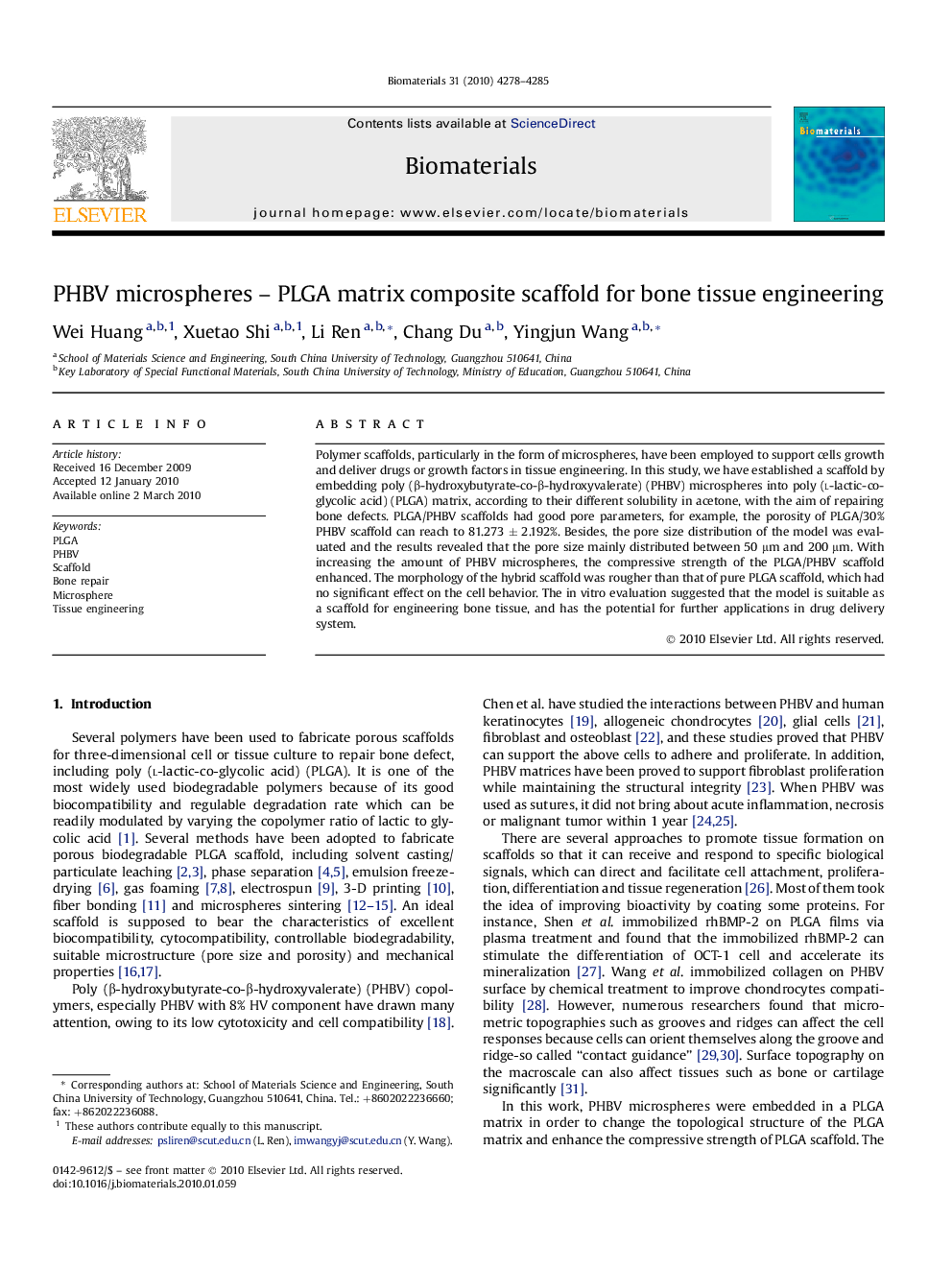| Article ID | Journal | Published Year | Pages | File Type |
|---|---|---|---|---|
| 8433 | Biomaterials | 2010 | 8 Pages |
Polymer scaffolds, particularly in the form of microspheres, have been employed to support cells growth and deliver drugs or growth factors in tissue engineering. In this study, we have established a scaffold by embedding poly (β-hydroxybutyrate-co-β-hydroxyvalerate) (PHBV) microspheres into poly (l-lactic-co-glycolic acid) (PLGA) matrix, according to their different solubility in acetone, with the aim of repairing bone defects. PLGA/PHBV scaffolds had good pore parameters, for example, the porosity of PLGA/30% PHBV scaffold can reach to 81.273 ± 2.192%. Besides, the pore size distribution of the model was evaluated and the results revealed that the pore size mainly distributed between 50 μm and 200 μm. With increasing the amount of PHBV microspheres, the compressive strength of the PLGA/PHBV scaffold enhanced. The morphology of the hybrid scaffold was rougher than that of pure PLGA scaffold, which had no significant effect on the cell behavior. The in vitro evaluation suggested that the model is suitable as a scaffold for engineering bone tissue, and has the potential for further applications in drug delivery system.
